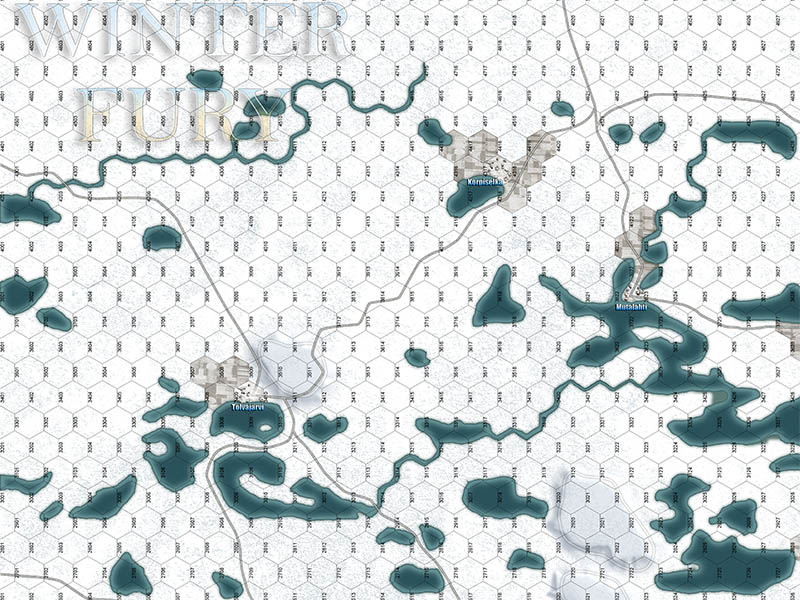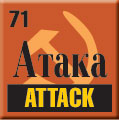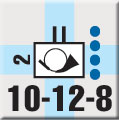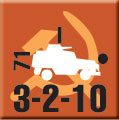Winter Fury:
Designer’s Notes
by Mike Bennighof, Ph.D.
March 2023
 The 1939 Soviet invasion of Finland became one of my earliest historical fascinations; the local library had a copy of The Winter War by Engle and Paananen and it was one of the first books of military history I read. The stirring tale of brave, outnumbered defenders of democratic Finland holding off the slavering hordes of godless communist Russians caught my 10-year-old imagination. A year or so later my grandmother would give me a boxed set of The Lord of the Rings for Christmas and even then I did not miss the parallels. The 1939 Soviet invasion of Finland became one of my earliest historical fascinations; the local library had a copy of The Winter War by Engle and Paananen and it was one of the first books of military history I read. The stirring tale of brave, outnumbered defenders of democratic Finland holding off the slavering hordes of godless communist Russians caught my 10-year-old imagination. A year or so later my grandmother would give me a boxed set of The Lord of the Rings for Christmas and even then I did not miss the parallels.
A little over a decade later, I developed a game system designed by Brian Knipple, in which each player drew “chits” allowing him or her to perform certain actions. That concept, I realized, would work very well to show the Soviet-Finnish battles of 1939-40, and that in turn would lead me to design the game that became Winter Fury.
Winter Fury is based on the December 1939 twin battles of Tolvajärvi and Ilomantsi, along the 1939 Finnish-Soviet border north of Lake Ladoga. There, amid heavy snow and thick forests, a scratch Finnish force of assorted battalions (ranging from elite ski jägers to exhausted reservists) surrounded and destroyed two Soviet rifle divisions. It would be a shocking outcome that exposed the Red Army’s deep flaws, an eerie foreshadowing of events outside Kyiv 84 years later.
The game itself is pretty simple to play, as wargames go. Units are battalions for the most part (with a handful of companies), and each hex is two kilometers across. The units attack and defend in what’s a fairly standard method for wargames: compare attack and defense strengths, obtain a ratio, roll a die and consult the Combat Results Table to see what happened.
 What makes Winter Fury (and other games using this system, which we call Command & Control) is what we call “activation.” Units must be activated to move and fight, and so each player has a set of “impulse chits” which say things like “Full,” “Move,” “Half” or “Attack.” A Full chit is the most desirable of these; pull it, and your units can do everything. Move just lets you move, Attack just lets you attack, and Half lets you do a little of each. There’s also a Choice chit, which lets you Move or Attack, but not both. What makes Winter Fury (and other games using this system, which we call Command & Control) is what we call “activation.” Units must be activated to move and fight, and so each player has a set of “impulse chits” which say things like “Full,” “Move,” “Half” or “Attack.” A Full chit is the most desirable of these; pull it, and your units can do everything. Move just lets you move, Attack just lets you attack, and Half lets you do a little of each. There’s also a Choice chit, which lets you Move or Attack, but not both.
A turn is made up of a varying number of these impulses, which means that some units will get to fight more than once in the course of a single turn. Just how many impulses comprise a turn can vary, mostly based on the weather.
 The Finns usually get more impulse chits in the container, which means that they’re more likely to get theirs drawn and in most turns will get more impulses than the Soviets – but that’s not a concrete guarantee. Making things even harder on the Red Army, the Soviets have three different formations in play (75th, 139th and 155th Rifle Divisions), each of them with their own set of chits. This melds together the Knipple concept of differing impulse capabilities with a formation-based system I designed for another game company a very long time ago. The Finns usually get more impulse chits in the container, which means that they’re more likely to get theirs drawn and in most turns will get more impulses than the Soviets – but that’s not a concrete guarantee. Making things even harder on the Red Army, the Soviets have three different formations in play (75th, 139th and 155th Rifle Divisions), each of them with their own set of chits. This melds together the Knipple concept of differing impulse capabilities with a formation-based system I designed for another game company a very long time ago.
This impulse system is one of the factors that give the Finns a chance to win. The historical result is at the high end of probability in this game (as it should be – the Finns did about as well as they were capable of doing). The Soviets come to play with overwhelming force: much more infantry and seemingly infinitely more powerful artillery, plus supporting arms, tanks, and Red Finnish ski troops.
 The terrain also aids the Finns. Most of the map is snow-covered forest, and most of the Finnish units have skis. They can move through the forests with little trouble, though they won’t have a lot of supporting artillery when they do (the guns, such as they are, still have to go by road). In sharp contrast, the Soviets are tied to the roads if they wish to advance. They can move on through the forest, but it’s a slow process, their supply situation is worse in the woods, and it’s harder to keep control of the troops when they get lost in the trees. The terrain also aids the Finns. Most of the map is snow-covered forest, and most of the Finnish units have skis. They can move through the forests with little trouble, though they won’t have a lot of supporting artillery when they do (the guns, such as they are, still have to go by road). In sharp contrast, the Soviets are tied to the roads if they wish to advance. They can move on through the forest, but it’s a slow process, their supply situation is worse in the woods, and it’s harder to keep control of the troops when they get lost in the trees.
The game puts great emphasis on command and control (thus the series title). Your battalions can’t just go hieing off into the deep woods on their own. They need both supplies and direction, which come from headquarters (the game rolls all this together as “supply,” but the game function represents both concepts). That’s going to keep your battalions within range of their headquarters (seven hexes for the Soviets, ten for the Finns) in most cases, but you always have the option to accept the penalties and send someone off in a bold or desperate gambit.
 For the Playbook edition, we gave the game a beautiful new map (that makes the pieces really pop against the snowy-white background) and full-color playing aids, and also added the pieces for an additional scenario based on the 1941 Finnish offensive over this same battlefield. The defending Soviet 71st Rifle Division had been formed around a cadre of “Red Finns” from the short-lived Finnish People’s Army, and fought with great determination against the best units in the “White Finnish” army, the 1st Jäger Brigade and the Cavalry Brigade. For the Playbook edition, we gave the game a beautiful new map (that makes the pieces really pop against the snowy-white background) and full-color playing aids, and also added the pieces for an additional scenario based on the 1941 Finnish offensive over this same battlefield. The defending Soviet 71st Rifle Division had been formed around a cadre of “Red Finns” from the short-lived Finnish People’s Army, and fought with great determination against the best units in the “White Finnish” army, the 1st Jäger Brigade and the Cavalry Brigade.
The jägers were the toughest Finnish veterans of the Winter War, formerly independent ski battalions gathered together to form a powerful light infantry striking force (but since the scenario takes place in the summer, there is no skiing going on). The Soviet 71st Rifle Division had been formed from the remnants of the Red Finnish 1st People’s Rifle Corps that had fought in the Winter War and suffered grievous losses. Apparently the “White Finns” had little interest in taking prisoners from this unit. But its troops slowed the jägers and stopped the cavalry cold.
I value the history as much as the game play, and the Playbook format gives the opportunity to add plenty of historical background – especially when the game has relatively short rules, like Winter Fury. It makes for a complete package, and I’m glad we were able to bring back Winter Fury so you can enjoy it.
Click here to order Winter Fury right now.
Sign up for our newsletter right here. Your info will never be sold or transferred; we'll just use it to update you on new games and new offers.
Mike Bennighof is president of Avalanche Press and holds a doctorate in history from Emory University. A Fulbright Scholar and NASA Journalist in Space finalist, he has published a great many books, games and articles on historical subjects; people are saying that some of them are actually good.
He lives in Birmingham, Alabama with his wife and three children. He will never forget his Iron Dog, Leopold. Leopold feared and hated bicycles.
Want to keep Daily Content free of third-party ads? You can send us some love (and cash) through this link right here.
|
